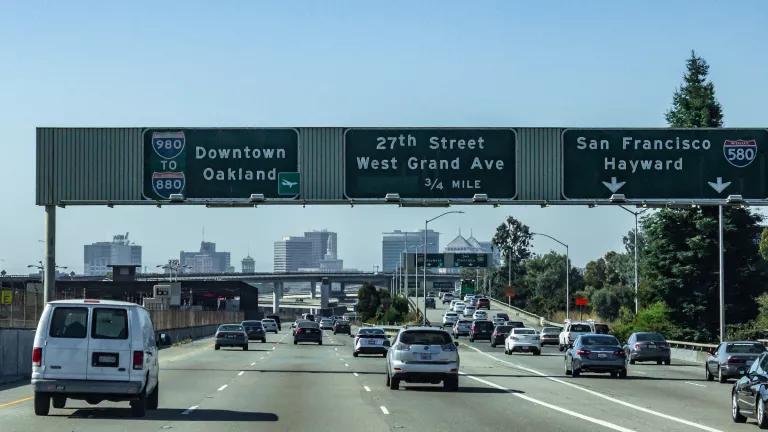
The current drought is highlighting many ways in which California’s water rights system is inequitable and poorly managed, but it doesn’t have to be that way. While water users frequently claim they are exempt from the authority of the State Water Resources Control Board, the Courts have repeatedly rejected those arguments, confirming that the Board has significant authority over all water rights in California. However, all too often the Board is prevented from exercising that authority due to political pressure, and when the Board does act, water users file litigation to try to bully the Board so they can go back to over-exploiting California’s water resources for profit.
Contrary to their Claims, San Francisco and other Pre-1914 Water Rights Holders are Subject to the State Water Board’s Authority:
The recent lawsuit by the City of San Francisco and other so-called senior water rights holders (see Background on Water Rights below) challenges the State Water Resources Control Board’s curtailment order, claiming that the Board cannot curtail their illegal diversions of water during the drought. It is just the latest example of the privileged few with senior water rights wrongly claiming they are above the law. As the San Francisco Chronicle explained,
The thrust of the legal challenge is that the state water board, which began regulating water draws in 1914, doesn’t have authority over water rights that predate its powers. Those with water rights dating before 1914, considered “senior” rights holders, claim that only the courts have jurisdiction.
The California Court of Appeals has repeatedly rejected these arguments, holding that all water users – including pre-1914 water rights like those claimed by San Francisco, as well as riparian water rights holders and other appropriative water rights holders – are subject to the State Water Board jurisdiction, including curtailment orders to prevent illegal diversions and protect other water rights holders, protect the environment, and prevent waste and unreasonable use. These cases include:
- In Stanford Vina Ranch Irr. District v. State Water Resources Control Board, 50 Cal. App. 5th 976 (2020), the Court of Appeal upheld the State Water Board’s curtailment of water diversions on Mill and Deer creeks by pre-1914 water rights holders to protect salmon during the 2014-2015 drought, rejecting the district’s claims that pre-1914 water rights were exempt from the Board’s authority to curtail and regulate water rights.
- In Light v. State Water Resources Control Board, 226 Cal.App.4th 1463 (2014), the Court of Appeal upheld the State Water Board’s authority to issue regulations curtailing diversions by riparian water rights holders and senior (pre-1914) water rights holders for frost protection from the Russian River to protect salmon, finding that the Board has the authority under the Reasonable Use doctrine to regulate and curtail pre-1914 and riparian water rights holders, even if they cannot require them to obtain a permit from the Board.
- In Millview County Water District v. State Water Resources Control Board, 229 Cal.App.4th 879 (2014), the Court of Appeal held that the Board has authority to administratively issue a Cease and Desist Order to a pre-1914 water rights holder to stop them from illegally diverting water, and can administratively determine the scope of a pre-1914 water right, rejecting the plaintiff’s argument that the Board must file a lawsuit in state court to do so.
- In Young v. State Water Resources Control Board, 219 Cal.App.4th 397 (2013), the Court of Appeal held that the Board has the authority to administratively determine that a pre-1914 water rights holder is illegally diverting water, and the Board can issue a Cease and Desist Order requiring that user to stop illegally diverting water, rather than forcing the Board to file a lawsuit in state court to enforce the water rights system.
- In United States v. State Water Resources Control Board, 182 Cal.App. 3d 82 (1986), the Court of Appeal held that the Board violated state law by setting Bay-Delta water quality standards that only applied to the state and federal water projects (the CVP and SWP) and that did not consider standards that would regulate other users of water, including pre-1914 water rights, because the Constitutional prohibition on waste and unreasonable use applies to all water rights holders: “[N]o water rights are inviolable; all water rights are subject to governmental regulation.”
The State Water Board’s Curtailment Order Does Not Currently Affect San Francisco (or Protect the Environment):
Curtailment is the process by which water rights holders are ordered to stop diverting water, because there is not enough water to support their claimed water right. Over the past century, California has issued far more water rights than there is water in an average year, resulting in a system that is grossly overallocated, meaning that curtailments are often necessary to prevent water users from illegally diverting water that belongs to other users or that is required to protect the environment. Curtailments generally follow the rule of priority, with the most junior appropriative water rights curtailed first, followed by more senior (older in time) water rights.
San Francisco’s lawsuit is particularly odd because the Board’s curtailment order does not currently affect San Francisco’s water supply. That’s because the State Board’s curtailment order does not apply to water that San Francisco or other water rights holders have previously stored in reservoirs. As a result, although the water rights held by San Francisco, the Glenn Colusa Irrigation District, and other senior water rights holders are included on the list of water rights that are curtailed, their water use is currently unaffected by the curtailment order because they are diverting previously stored water (as this memo from the Glenn Colusa Irrigation District explains).
San Francisco is once again teaming up with anti-environmental irrigation districts, this time to challenge the State Water Board’s authority, even though the Board’s actions don’t currently affect San Francisco’s water supply and even though San Francisco has more water in storage than many other water rights holders, as the Chronicle notes.
Moreover, unlike the Board’s curtailment regulation for the Klamath River watershed (which protects instream flows in these rivers from diversion in order to protect salmon), the curtailment regulation for the Bay-Delta watershed does not protect water quality or fish and wildlife, and instead it primarily protects water that is stored behind dams from being illegally diverted, as the Office of Administrative Law explained in approving the Board’s regulation: “This action by the State Water Resources Control Board adopts emergency regulations to curtail water diversions in the Delta watershed when water is not available at water right holders' or claimants' priority of right or to protect releases of stored water.” That is why the State and federal water projects and many of their contractors actively support the Board's curtailment order. The State Water Board already waived water quality protections for fish and wildlife in the Bay-Delta, leading fishery biologists to warn that nearly all salmon in the Sacramento River are likely to be killed this year.
However, the curtailment regulation includes a narrow exception to help ensure there is adequate water for health and safety needs, allowing limited water diversions by junior water rights holders to provide water for drinking and sanitation (see section 878.1 of the Board’s adopted regulation). This is an example of how the State Constitution’s Reasonable Use doctrine can be utilized to modify the rule of priority. It will be interesting to see if senior water rights holders challenge this provision, similar to the claims of the Sacramento River Settlement Contractors during the last drought. The State Water Board has similar authority under the Reasonable Use doctrine to curtail water rights to protect fish and wildlife, as they did in Mill and Deer Creek during the last drought and as they are doing this year in the Klamath River watershed.
The State Water Board has ample legal authority to reform how our water rights system is implemented. The challenge is in convincing the Governor’s office to allow them to use that authority.
-----------------
Background on Water Rights:
All water in California belongs to and is the property of the people of the state, and water rights are the legal mechanism by which a person can use the public’s water. As a matter of law, all water rights are limited, most notably by the Constitutional mandate prohibiting waste and unreasonable use of water, and all water rights can be reconsidered and modified in order to protect the Public Trust. California has several types of rights to divert and use surface water, most notably:
- Riparian water rights: Riparian rights attach to land that is riparian (adjacent) to a river or stream that enables the owner of land to use a reasonable share of the natural flow of that river on that riparian property. Riparian rights are the dominant right on the East Coast and at common law, and they are generally the most senior water rights, meaning that in times of drought or shortage, riparian rights are the last to be curtailed or limited.
- Appropriative water rights: Appropriative rights are a right to divert water from a river or other waterbody that can be used on land that is not adjacent to that river or stream. Appropriative rights were created by California and other western states, most notably to enable water users to store water and/or move water hundreds of miles away from the rivers and streams where the water is diverted (both of which are illegal for riparian water rights). Rather than sharing equally in available water like riparian water rights, the seniority of appropriative water rights depends on when those rights were granted, commonly known as “first in time, first in right,” meaning that the junior appropriative right holder must cease all water diversions before the senior right holder must give up a drop of water.
- Pre-1914 Water rights: Prior to the year 1914, appropriative water rights could be created by posting a notice, diverting water from a river or stream, and using that water beneficially. In 1914, California enacted legislation requiring filing an application for a water right with the State to obtain an appropriative right, and any appropriative rights sought and/or issued after 1914 are subject to permitting by the State Water Resources Control Board. Pre-1914 water rights are also known as “senior water rights” because they are not subject to the Board’s permitting requirements, but as discussed above these and all water rights are still subject to regulation and curtailment by the Board.
The right to use the public’s water in California is in many ways determined by when one’s ancestors arrived in California. In practice, this has meant that our system of water rights gives little to no consideration for ensuring safe and affordable drinking water for all Californians, protecting fish and wildlife, or recognizing and enforcing water rights held by Native American tribes since time immemorial. But the primary impediments to reform are political, not legal, given the State’s expansive authority under the Public Trust and Reasonable Use doctrines.


